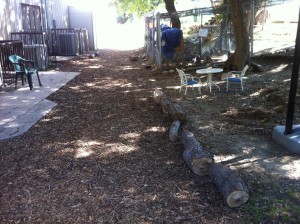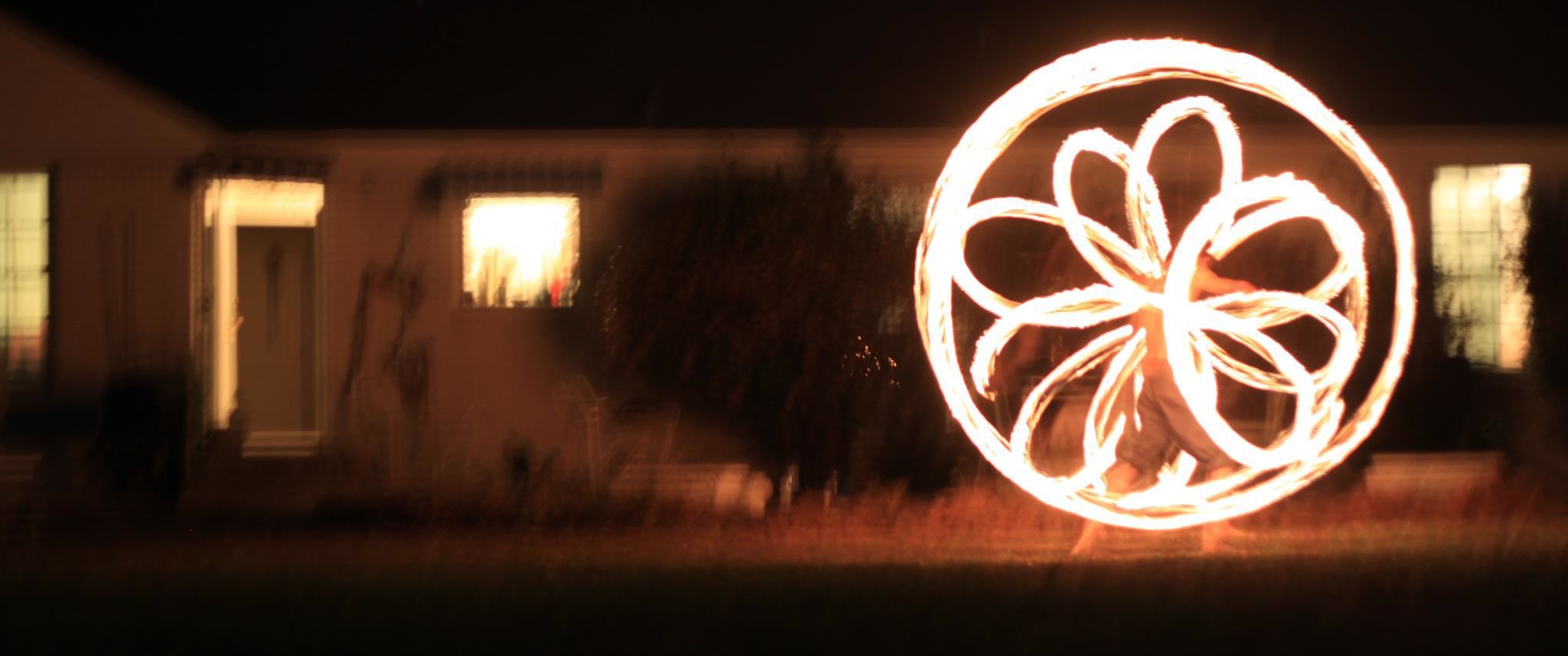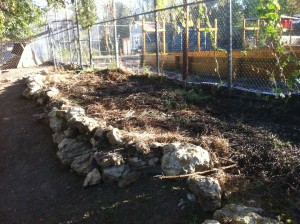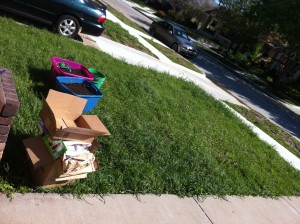 This is the front yard when we first moved to Ft Worth. My room mate mowed it a few times and I finally began the process of terraforming it to an edible landscape.
This is the front yard when we first moved to Ft Worth. My room mate mowed it a few times and I finally began the process of terraforming it to an edible landscape.
At the time, I was driving a BMW 328i, a four door coupe or sedan, and I had to haul soil in 20 gallon containers. Yes, that’s right. I moved soil in a BMW.
The Process
I didn’t do a great job at documenting anything, but this is the best picture I could find. We
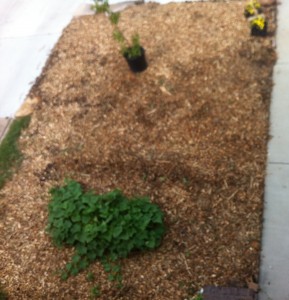
Progress!
placed cardboard over the grass to choke it out and layered 2 to 3 inches of soil above that. On top of the soil, we placed a good 3 to 5 inches of wood chip mulch to protect the soil from the harmful effects of the sun, wind, and rain. Yes, I said rain. Soil is dense and will slowly absorb water. Rainfall here in Texas falls down hard in good quantities. With too much rain, the good soil flows away. Mulch, on the other hand, is less dense (it takes up more volume with less mass. density = mass/volume). Once the rain hits the mulch it’s taken the hit for the soil and the water can percolate down with the force of gravity. Rinse and repeat the process of cardboard, soil, mulch until the entire area is covered.
An alternative method is just use cardboard and mulch. If you leave it alone for a good season or two, the cardboard will decompose and hopefully have taken out the grass that was there.
Planting
Planting is easy. Push the mulch aside and put a seed in the soil or transplant a plant into the soil. If you didn’t put soil above the cardboard, you can punch a hole through and 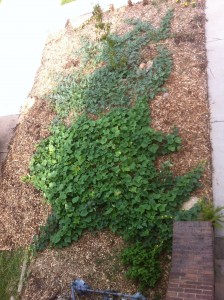 plant into the soil below. Compost can be added to the hole punching method to add some beneficial bacteria and nutrients. Once you plant the seeds or the plants give them a nice dose of H2O and . .
plant into the soil below. Compost can be added to the hole punching method to add some beneficial bacteria and nutrients. Once you plant the seeds or the plants give them a nice dose of H2O and . .
Wait a Little While
Watering is reduced when you use mulch. After planting the seeds and watering, I usually let the plants germinate on their own. If it’s exceptionally hot, I usually wait 4 to 6 days and check the moisture of the soil around the seeds. How do you check the moisture? Use your sense of touch or stick your finger in the soil.
Harvest Time
This garden was ridiculously easy. Our harvest was more than any of us could eat. Yes, in the picture my roommate, Sara, has a bucket full of cucumbers. We had plenty of them before that as well. So much so that I got sick of cucumbers.
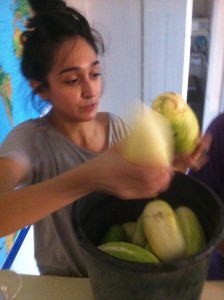
Cucumber Bucket from the Front Yard
Even in the heat of July and August, the garden is still pumping out produce. We’ve had neighbors walk buy and count the melons for us on multiple occasions (I think the count is 12).
In the meantime, we’ve prepared the other half of the yard and are beginning to make plans for some more perennial plants. A peach tree has gone into the ground, and the current thoughts are flowers, delicious herbs, and Fall veggies.
The only thing missing is a Food is Free sign to get the melon counters to get a hold of us, or maybe a workshop sign to get them to join our little operation. I’m not sure yet, but we’ll keep posting all the good things.

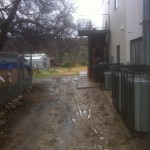 To alleviate the issue, we decided to obtain some free mulch and spread it over the soil. A good three inches will do the trick. The transformation after is unbelievable. A place that was once a trap to walk through can become functional once again.
To alleviate the issue, we decided to obtain some free mulch and spread it over the soil. A good three inches will do the trick. The transformation after is unbelievable. A place that was once a trap to walk through can become functional once again.